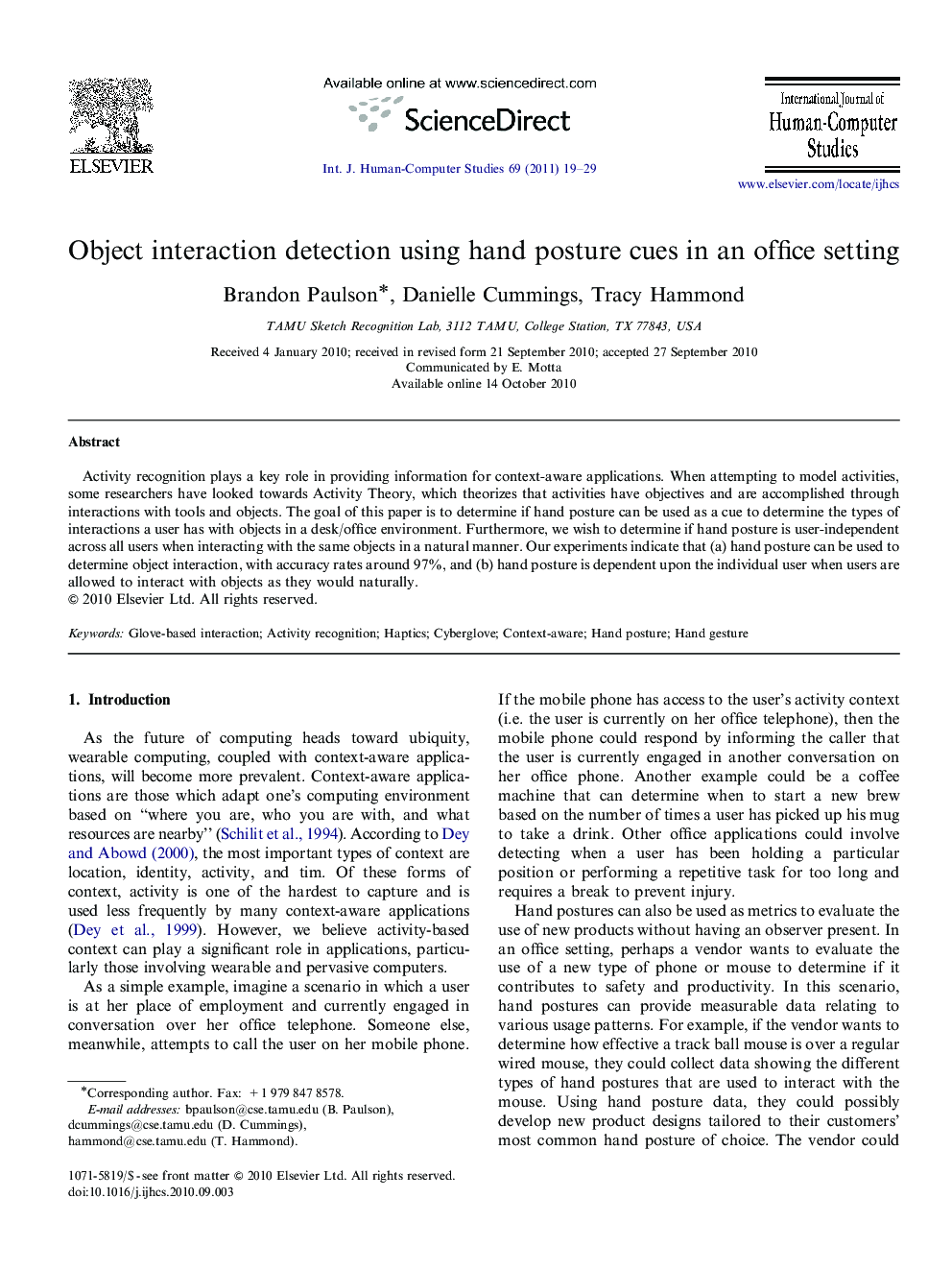| Article ID | Journal | Published Year | Pages | File Type |
|---|---|---|---|---|
| 400997 | International Journal of Human-Computer Studies | 2011 | 11 Pages |
Activity recognition plays a key role in providing information for context-aware applications. When attempting to model activities, some researchers have looked towards Activity Theory, which theorizes that activities have objectives and are accomplished through interactions with tools and objects. The goal of this paper is to determine if hand posture can be used as a cue to determine the types of interactions a user has with objects in a desk/office environment. Furthermore, we wish to determine if hand posture is user-independent across all users when interacting with the same objects in a natural manner. Our experiments indicate that (a) hand posture can be used to determine object interaction, with accuracy rates around 97%, and (b) hand posture is dependent upon the individual user when users are allowed to interact with objects as they would naturally.
Research Highlights►Use of classifiers to determine how much information hand postures can provide. ►To determine if hand posture can be used for recognizing types of object interaction in an office environment. ►Hand posture can be used to determine object interaction with accuracy rates of around 97%. ►Hand posture is dependent on individual user when users are allowed to interact with objects naturally.
